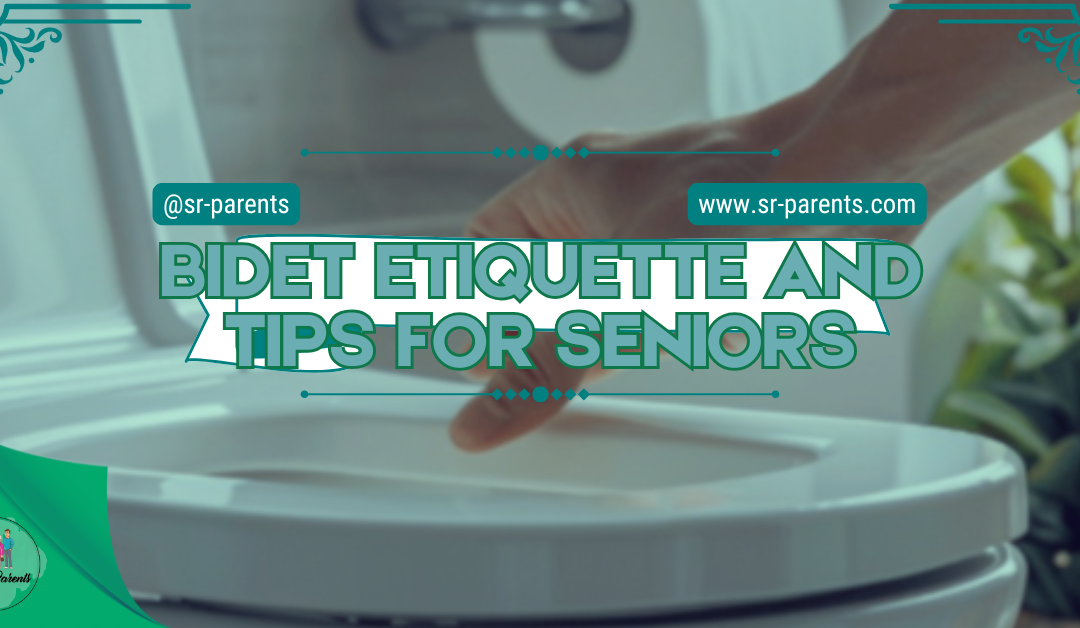Using a bidet can be a game changer for seniors, enhancing both comfort and hygiene in the bathroom. However, understanding bidet etiquette and tips for seniors is essential for a smooth experience. For many, the switch from traditional toilet paper to a bidet may come with questions or uncertainty. This guide aims to demystify bidet use, providing practical tips that ensure seniors feel confident and at ease in adopting this modern bathroom fixture.
This article covers all the bases, from adjusting water pressure to knowing how to clean the Bidet itself. With insights into maintaining privacy and comfort while using a bidet, seniors can enjoy a new level of cleanliness and independence. Whether considering a bidet for the first time or seeking to refine their technique, readers will discover essential etiquette tips that foster a positive bathroom experience.
Contents
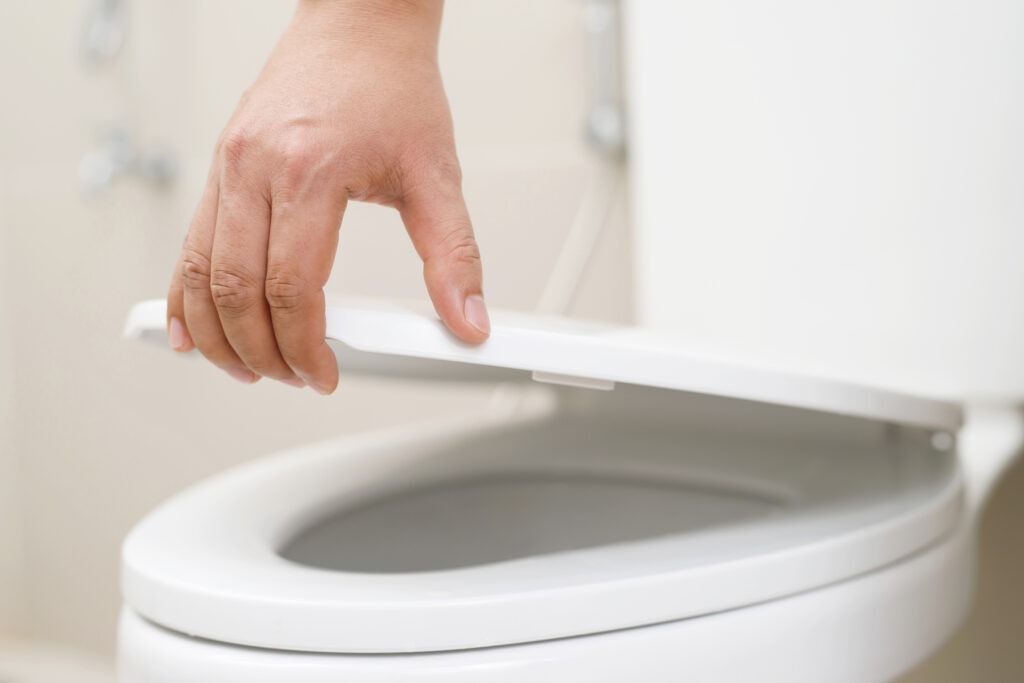
Navigating the use of bidets in public or shared bathrooms can concern seniors. This is especially true for those who may not have grown up with them or are accustomed to their operation. Proper bidet etiquette is crucial for maintaining hygiene and comfort in these settings. It’s important to remember that while bidets offer an efficient and gentle alternative to toilet paper, there are certain practices one should follow to ensure their use is considerate of cleanliness standards and respectful of subsequent users.
Seniors should be mindful of accessibility features and the safe operation of bidets to avoid any potential mishaps. They must also be attentive to respecting the privacy of others in shared bathroom spaces. Moreover, considering the environmental benefits of bidets can make their use a practical choice.
Key Takeaways
Proper bidet use promotes hygiene and comfort in shared spaces.
Seniors should be aware of safety and accessibility when using bidets.
Respecting privacy and the environment is key to proper bidet etiquette.
Understanding the Bidet
In this section, the reader will gain insight into bidets’ historical context and diversity, along with understanding their specific advantages for senior users.
History and Types of Bidets
Bidets originated in France in the 17th century and have evolved to suit a variety of hygienic needs. They provide a stream of water for post-toiletry cleaning and are found in several forms. Stand-alone bidets resemble a toilet basin and require the user to straddle and use them separately from the toilet.
Meanwhile, toilet seat bidets, or electronic bidets, are integrated within the toilet seat and offer various functions, such as warm water and air drying. Lastly, hand-held bidets, or bidet sprayers, give users manual control over-cleaning.
Benefits for Seniors
Seniors can experience enhanced hygiene and independence in bathroom routines through bidets. These devices are especially beneficial for those with limited mobility or dexterity, as bidets can reduce the need for physical wiping, thereby mitigating the risk of falls or strain.
Features like adjustable water temperature and pressure can accommodate sensitive skin and provide a gentle cleansing experience. Healthline provides additional perspective on the ease of using bidets in their guide on how to use any kind of Bidet properly.
Preparation for Use
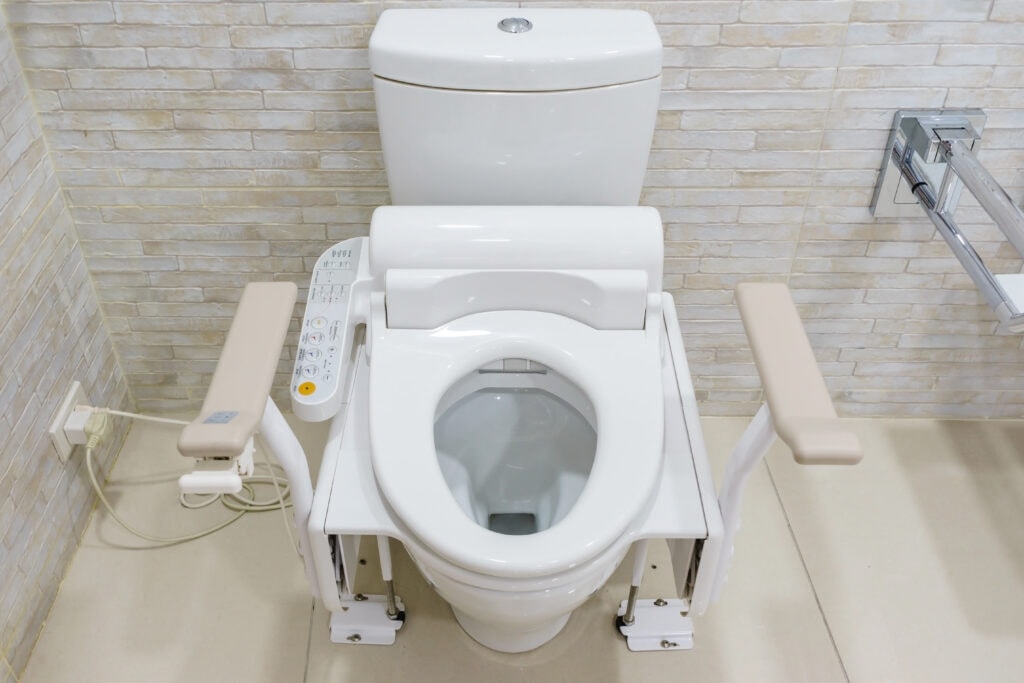
When using bidets in public or shared restrooms, seniors should take a moment to familiarize themselves with the facility and maintain hygiene standards. This awareness is crucial in promoting Bidet Etiquette and Tips for Seniors. The following subsections detail how to properly locate and use a bidet with respect to shared bathroom etiquette and necessary hygiene practices.
Locating the Bidet
Seniors should look for the Bidet, typically installed next to the toilet. It may resemble a small toilet or a seat with built-in sprays. In some cases, directional signage is available to assist users in finding the Bidet. They should not hesitate to ask an attendant for assistance if it is unclear.
Upon finding the Bidet, it’s important to patiently wait for one’s turn and respect privacy. They should ensure the previous user has ample time to exit before entering. Additionally, they should prepare needed items like a towel or tissue beforehand to minimize time spent in the facility and accommodate other users.
Respect for Privacy: Wait patiently for the Bidet to become available, and do not disrupt the privacy of others.
Efficiency in Usage: Prepare necessary items in advance and be considerate of others waiting.
Hygiene Considerations
Hygiene is paramount when using a public bidet. Seniors should first utilize toilet paper to clean themselves before activating the bidet spray. If they choose soap, it should be applied and rinsed away thoroughly. Before and after bidet use, they must wash their hands with soap and water to prevent the spread of germs.
Before Bidet Use: Clean with toilet paper. Optionally apply soap.
After Bidet Use: Wash hands thoroughly and use a towel to dry off.
Bidet Etiquette and Tips for Seniors: Using a Bidet
When using a bidet, seniors should prioritize comfort and safety. They must adjust settings to their needs and adopt proper positioning for effective use.
Adjusting Water Temperature and Pressure
Before using a bidet, one must check the water temperature. It should be warm enough to cleanse without causing discomfort. To do this, turn on the Bidet and adjust the temperature controls.
Additionally, adjusting the water pressure is crucial to avoid discomfort or damage to sensitive skin. Users should start with a low pressure and increase gradually as needed.
Positioning and Technique
Proper positioning is important for the effectiveness of the Bidet. Users should sit or position themselves so the water stream is aimed at the area that requires cleaning. The technique varies depending on the type of Bidet but typically involves shifting one’s weight or adjusting the position slightly to ensure thorough cleansing. After using the Bidet, one can use a small towel or toilet paper to dry off if a drying feature is not available.
Did You Know?
Seniors should hold the bidet sprayer close to their body and start with low pressure. They need to remain seated during use to prevent splashing. After using the sprayer, they should stand to avoid dripping water.
Post-Bidet Etiquette
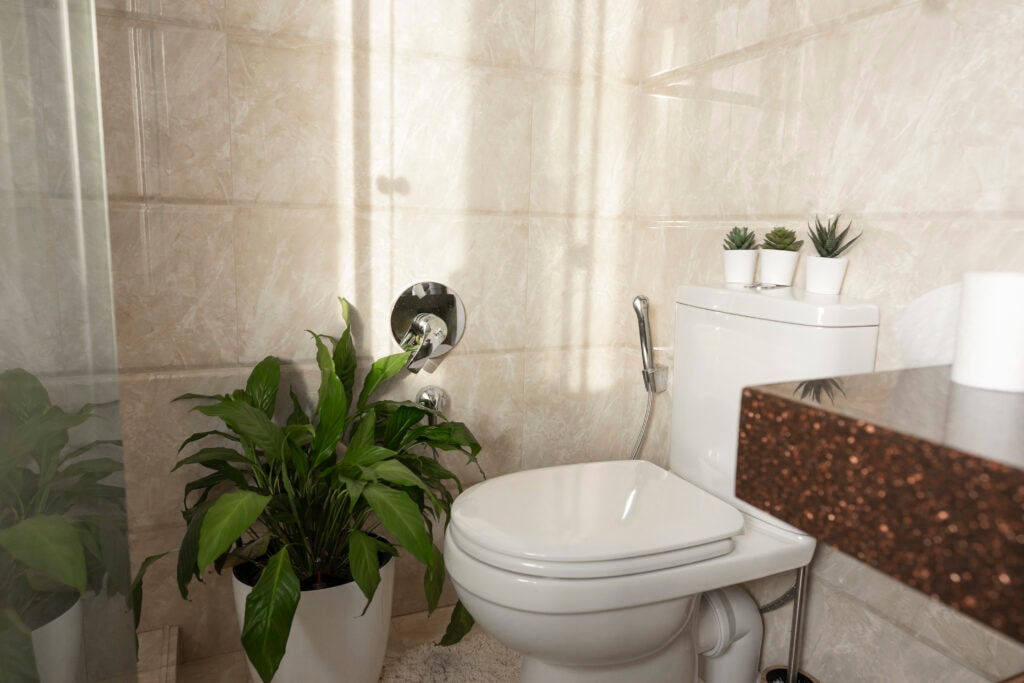
Proper post-bidet etiquette ensures cleanliness and consideration for the next user, especially when discussing Bidet Etiquette and Tips for Seniors. It involves precise steps to leave the Bidet and the bathroom in an acceptable state, allowing seniors to maintain hygiene while also being mindful of others.
Drying Off After Use
After using a bidet, one should gently dry off to prevent discomfort and ensure personal hygiene. Users may find different methods available for drying:
- Air Dry: Some bidets feature an air-dry function. One should remain seated until they are sufficiently dry.
- Towel Dry: If a dedicated towel is provided, it should be used to pat the area dry. Do not throw reusable towels into the Bidet or toilet.
Cleaning Up for the Next User
Leaving the Bidet clean is a crucial aspect of bidet etiquette. Users should perform the following:
- Clean the Nozzle: If the Bidet has a self-cleaning feature, activate it to ensure the nozzle is ready for the next person.
- Tidy the Area: Any splashes around the Bidet should be wiped up with toilet paper or a cloth provided for this purpose.
Proper etiquette also involves adjusting the water flow to one’s preference to avoid overflowing and to ensure the next user starts with a reset setting.
Accessibility and Safety
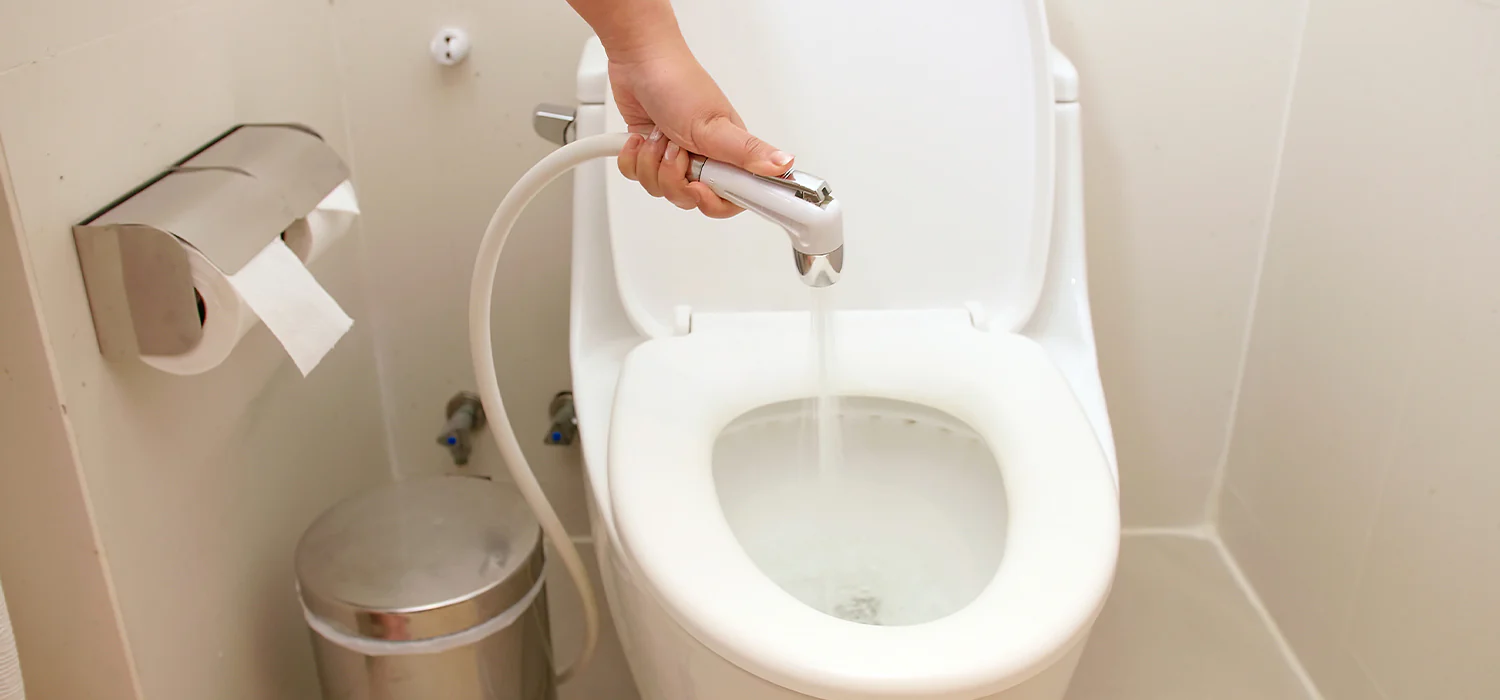
Creating an accessible and safe bathroom environment is crucial for seniors, particularly when using bidet features in public or shared spaces. Enhancements focused on stability and clear safety precautions can significantly reduce the risk of accidents.
Supportive Features for Seniors
Seniors can benefit from bidet models with wide seats, which provide added comfort and better accessibility. It is also important for bidets to have adjustable water pressure and simple controls, such as knob-style interfaces, to accommodate the varying needs and preferences of elderly users.
Features such as heated seats and air dryers offer additional comfort and convenience, which can be particularly valuable for those with mobility limitations.
Avoiding Slips and Falls
To safeguard against common bathroom hazards, installing grab bars in critical areas is essential. They should be placed in the shower or bathtub area and beside the toilet to provide stability and balance.
Other preventative measures include slip-resistant mats and ensuring the area is well-lit to improve visibility. Regular maintenance to keep floors dry can further prevent slips and falls.
Respecting Privacy
Maintaining privacy for oneself and others is a crucial aspect of Bidet Etiquette and Tips for Seniors when using a bidet in public or shared bathrooms. It involves being considerate and discreet in one’s actions to ensure a respectful experience for everyone involved.
In shared bathroom environments, individuals need to exercise discretion. This means one should avoid discussing their bidet usage or the bidet usage of others outside of the bathroom setting. When entering or exiting the stall or bidet area, they should be mindful of doing so quietly and respectfully, ensuring they do not draw undue attention to themselves or others.
Users should check the Bidet for cleanliness before and after use, leaving it hygienic for the next person. Personal items should be managed so that they are not visible or intrusive to others, keeping the space organized and tidy. This approach helps to provide a comfortable and respectful atmosphere for all users.
Environmental Considerations
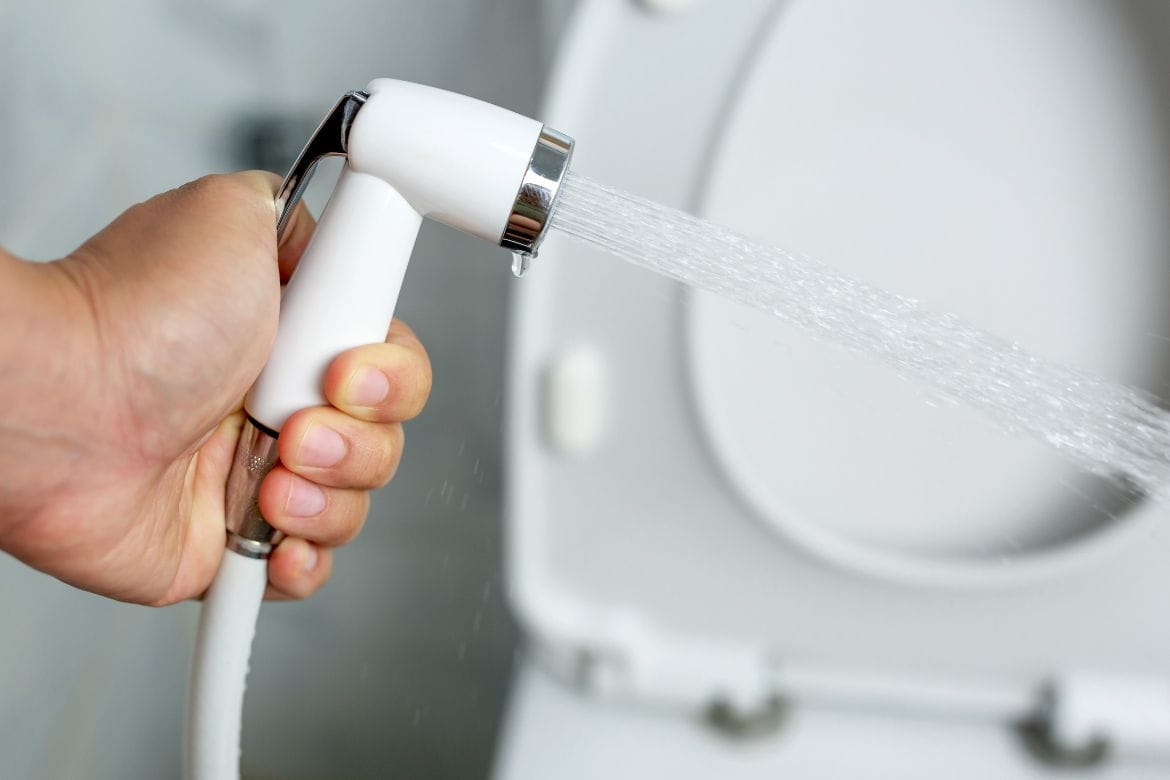
Water Conservation Tips
Reduce water flow: Seniors should ensure they adjust the Bidet’s water flow to their minimum requirement to prevent unnecessary water usage. A controlled stream is sufficient for effective cleaning.
Brief usage: Encourage brief use of the Bidet rather than prolonged spraying, which conserves water and is usually adequate for cleaning.
Sustainable Practices
Paper waste reduction: By using a bidet, seniors can contribute to substantially less toilet paper waste, which is beneficial as bidets require zero trees to be harmed in their operation, unlike toilet paper production.
Chemical reduction: Decreased reliance on toilet paper also releases fewer chemicals into the environment as the paper production process often involves bleaching and other potentially harmful substances.
Here’s an additional video about bidets.
By: Your Friendly Proctologist
Mastering Bidet Etiquette for Enhanced Comfort and Sustainability for Seniors
Embracing bidet use can significantly enhance comfort and hygiene for seniors, making bathroom routines more efficient and enjoyable. Understanding Bidet Etiquette and Tips for Seniors is essential for personal comfort and respecting shared spaces. By familiarizing themselves with proper practices—such as ensuring cleanliness, maintaining privacy, and navigating public restrooms thoughtfully—seniors can adapt to this modern hygiene solution with confidence and ease.
Ultimately, the benefits of bidets extend beyond just personal health; they also promote environmental sustainability by reducing toilet paper waste. As seniors become more comfortable with bidet usage, they can enjoy greater independence while contributing positively to the environment. With the right knowledge and techniques, the transition to using a bidet can be a seamless and rewarding experience.
Frequently Asked Questions
When using a bidet in public restrooms, seniors have particular considerations. This section addresses common queries to ensure comfort, hygiene, and respect for shared spaces.
What Steps Should Seniors Follow to Use a Bidet Properly in Public Restrooms?
Seniors should first verify the cleanliness of the Bidet and then adjust the seat if necessary. It’s important to start with a gentle water stream and to position oneself correctly to avoid splashes. After use, they should dry themselves with toilet paper or a designated bidet towel.
One should always clean the Bidet before and after use, whether it comes with a self-cleaning feature or requires manual cleaning. Never throw tissue paper into the Bidet, as it can cause clogs. Make sure to wash your hands thoroughly after using the Bidet.
A first-time senior user should carefully read any instructions provided in the restroom. If available, practicing with the bidet controls to get comfortable with the water pressure and temperature before use is advisable. Assistance from a caregiver or trusted person may also be beneficial if needed.
Keep Connected With Us
Are you prepared to begin a journey filled with compassion and knowledge? Join us on social media for uplifting stories, expert advice, and essential tips on caring for seniors!
? Website: Check out sr-parents.com for in-depth articles and resources related to senior care, health, and wellness.
? Pinterest: Discover a wealth of caregiving ideas, home solutions, and activities tailored for seniors at pinterest.com/seniorparents.
? Facebook: Join our supportive community at facebook.com/sr.parents. Connect with other caregivers, share your stories, and find motivation.
? Twitter: Stay updated by following us at twitter.com/senior_parents for the latest news and discussions about senior care.
? Instagram: Visit instagram.com/seniorparents for inspiring moments, caregiving tips, and insights into the lives of seniors and their families.
Stay engaged, inspired, and informed with our latest articles and heartwarming narratives on senior care.

